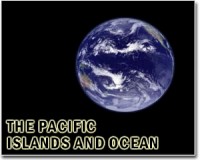| . |  |
. |
Manoa HI (SPX) May 10, 2011 El Nino and its partner La Nina, the warm and cold phases in the eastern half of the tropical Pacific, play havoc with climate worldwide. Predicting El Nino events more than several months ahead is now routine, but predicting how it will change in a warming world has been hampered by the short instrumental record. An international team of climate scientists has now shown that annually resolved tree-ring records from North America, particularly from the US Southwest, give a continuous representation of the intensity of El Nino events over the past 1100 years and can be used to improve El Nino prediction in climate models. The study, spearheaded by Jinbao Li, International Pacific Research Center, University of Hawai'i at Manoa, is published in the May 6 issue of Nature Climate Change. Tree rings in the US Southwest, the team found, agree well with the 150-year instrumental sea surface temperature records in the tropical Pacific. During El Nino, the unusually warm surface temperatures in the eastern Pacific lead to changes in the atmospheric circulation, causing unusually wetter winters in the US Southwest, and thus wider tree rings; unusually cold eastern Pacific temperatures during La Nina lead to drought and narrower rings. The tree-ring records, furthermore, match well existing reconstructions of the El Nino-Southern Oscillation and correlate highly, for instance, with d18O isotope concentrations of both living corals and corals that lived hundreds of years ago around Palmyra in the central Pacific. "Our work revealed that the towering trees on the mountain slopes of the US Southwest and the colorful corals in the tropical Pacific both listen to the music of El Nino, which shows its signature in their yearly growth rings," explains Li. "The coral records, however, are brief, whereas the tree-ring records from North America supply us with a continuous El Nino record reaching back 1100 years." The tree rings reveal that the intensity of El Nino has been highly variable, with decades of strong El Nino events and decades of little activity. The weakest El Nino activity happened during the Medieval Climate Anomaly in the 11th century, whereas the strongest activity has been since the 18th century. These different periods of El Nino activity are related to long-term changes in Pacific climate. Cores taken from lake sediments in the Galapagos Islands, northern Yucatan, and the Pacific Northwest reveal that the eastern-central tropical Pacific climate swings between warm and cool phases, each lasting from 50 to 90 years. During warm phases, El Nino and La Nina events were more intense than usual. During cool phases, they deviated little from the long-term average as, for instance, during the Medieval Climate Anomaly when the eastern tropical Pacific was cool. "Since El Nino causes climate extremes around the world, it is important to know how it will change with global warming," says co-author Shang-Ping Xie. "Current models diverge in their projections of its future behavior, with some showing an increase in amplitude, some no change, and some even a decrease. Our tree-ring data offer key observational benchmarks for evaluating and perfecting climate models and their predictions of the El Nino-Southern Oscillation under global warming." Citation: Jinbao Li, Shang-Ping Xie, Edward R. Cook, Gang Huang, Rosanne D'Arrigo, Fei Liu, Jian Ma, and Xiao-Tong Zheng, 2011: Interdecadal modulation of El Nino amplitude during the past millennium. Nature Climate Change.
Share This Article With Planet Earth
Related Links Water News - Science, Technology and Politics
 'Open for business' Hawaii dismisses nuclear fears
'Open for business' Hawaii dismisses nuclear fearsHonolulu, Hawaii (AFP) March 18, 2011 Hawaii insists it is open for business, rejecting worries about harmful nuclear radiation reaching the tourist-friendly US island state from earthquake-hit Japan. The popular getaway has seen some Japanese tourists cancel trips in the wake of last week's massive earthquake and tsunami 4,000 miles (6,400 km) across the Pacific, which damaged a nuclear power plant, releasing harmful radiation. ... read more |
|
| The content herein, unless otherwise known to be public domain, are Copyright 1995-2010 - SpaceDaily. AFP and UPI Wire Stories are copyright Agence France-Presse and United Press International. ESA Portal Reports are copyright European Space Agency. All NASA sourced material is public domain. Additional copyrights may apply in whole or part to other bona fide parties. Advertising does not imply endorsement,agreement or approval of any opinions, statements or information provided by SpaceDaily on any Web page published or hosted by SpaceDaily. Privacy Statement |